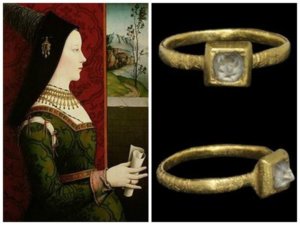Why Are Diamond Engagement Rings Popular?
No one can say with any authority exactly when the custom of giving rings for engagement or betrothal began. There is a reference in Genesis (Chapter 24 v 22) which describes the giving of a ring, weighing five and a half grams, when Isaac sets his sights on Rebekah. Many ancient civilisations such as the Egyptians, Greeks and Romans all have traditions of giving rings but at that time diamonds were incredibly rare and the privilege of a few.

The ancients began the tradition of wearing an engagement ring on the third finger of the left hand, believing that the ‘vena amoris’ ran from this finger to the heart.
Until the 18th century, the only source of diamonds was India. Then diamonds were discovered in Brazil and subsequently in the 19th century in South Africa. A greater supply enabled diamonds to be acquired by others than Royalty and nobility.
The earliest record of the giving of a diamond engagement ring was actually this month (on 17th August) in 1477 when Mary of Burgundy received a betrothal ring from Archduke Maximillian of Austria.

It was largely due to the supreme marketing efforts of De Beers that an increasing number of brides-to-be wanted a diamond engagement ring. In the USA, this increased from around 10% prior to the second world war to 80% by the end of the century.
Diamond above all other gems has an amazing hardness and cannot be scratched by anything it is likely to come into contact with, apart from another diamond. De Beers also suggested that one month’s salary should be used as a guide when considering how much to spend on a ring.
